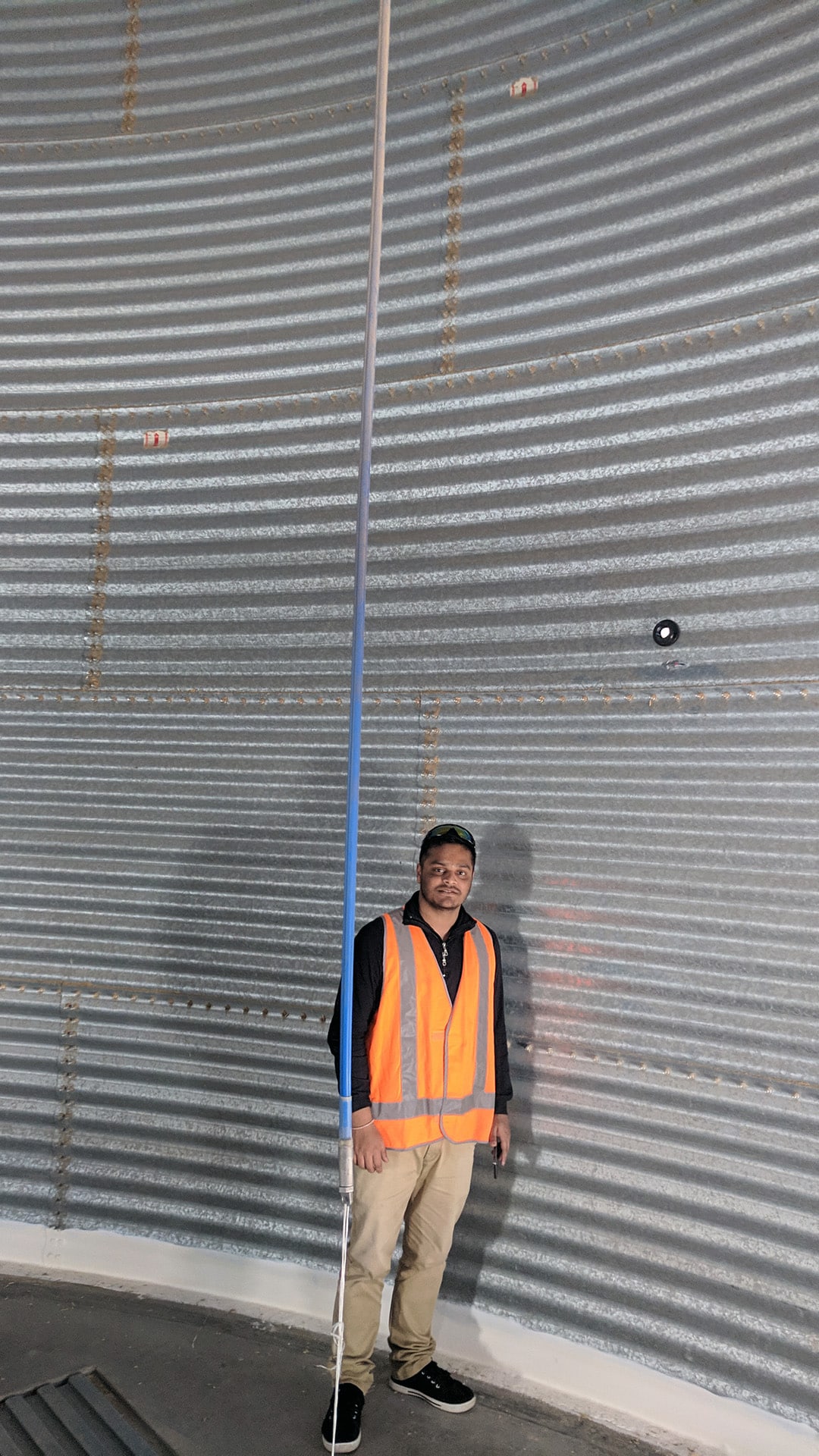START
FINISH

Summary
On-farm grain storage can bring significant economic benefits for growers, however there is also high risk of the grain being spoiled through poor storage conditions. This project explored strategies for efficiently maintaining optimal conditions in steel silos.
Grain should be stored below 15°C to minimise insect growth and above the delivery limit moisture content of 12 – 13 per cent to optimise grain condition.
It was found that by combining aeration with sensors and passive strategies these moisture and temperature requirements could be maintained with reasonable efficiency, even during the South Australian summer.
Background
On-farm grain storage is increasing, with forecasts that storage across Australia could increase to 20 million tonnes (from 15.6mt currently) by 2025. On-farm storage offers growers opportunities to manage harvest logistics, maintain or improve grain quality, and optimise market opportunities. However on-farm storage also carries significant risks of economic losses if grain spoils due to improper storage.
This project builds on GRDC project USA00017 ‘Building capacity in stored grain facilities’ for 2016 to 2019.
Research Aims
The core objectives of the project were to:
- Develop guidelines for the design of grain aeration systems, considering solar heating, climate, grain type, airflow requirements and bin layout.
- Develop energy efficient aeration control strategies to store grain at <15°C.
- Develop mathematical models to investigate aeration potential using local historical weather data.
In The Field
Several steel silos ranging from 100 to 1,000 tonnes in capacity were fitted with state-of-the-art in-silo sensors and aeration controllers.
Grain was found to be 11°C above ambient temperature immediately after harvest, with a moisture content well below the 12 to 13 per cent limit for delivery.
Installing sensors in the grain enabled precise and automated aeration for efficient cooling and conditioning of the grain.
Temperatures in the headspace at the top of a silo were measured at up to 26°C above ambient, while silo walls could exceed 50°C in hot conditions.
Aeration cooling during the summer was able to reduce the grain temperature from 40°C to less than 20°C with 140 fan hours, and grain moisture content increased. Grain temperature rose again if roof vents were left open during hot and windy weather and cooling could require 600 fan hours per season if hot ambient air was circulated through the grain.
Data gathered from these field activities was used to develop computer simulations which showed that a peak at the top of the grain (from silo filling) received substantially less benefit from aeration cooling. Poorly designed under-floor ducts in flat-bottomed silos also contributed to ‘dead zones’ in the lower grain, where aeration cooling was poor.
Results
This project resulted in 15 major findings and 11 recommendations for growers. These are detailed in the project Final Report.
Key points established by the research include the viability of using managed aeration to store grain at around 15°C in steel silos in South Australia, by taking advantage of periods where ambient air was 20°C or below.
Optimal conditions were found to be more easily maintained if roof vents were kept closed on hot, windy days. In flat bottomed silos, increasing vent open area from a typical 15 per cent to 26 per cent can dramatically reduce airflow ‘dead zones’ at the bottom of the silo.
Good airflow throughout the silo accelerates grain cooling and conditioning while a daily burst of aeration may help to improve insect control.
Insulating silos is ideal, however painting steel silos white was found to reduce the temperature of grain near the silo walls from 11°C above ambient to 5°C above.
It was hoped to deliver findings from this project to growers at a field day at Balaklava but this was stopped by COVID lockdowns. The information has been shared with the StoredGrain.com.au website and on-farm storage fact sheets are planned.
Project Participants
University of South Australia: Professor John Fielke, Associate Professor Chandra Singh, Dr Shubham Panigrahi
Growers: Brett Roberts, Gavin Roberts, Tyron Stowers, Mark Bigg
The Problem
On-farm grain storage offers growers many benefits but also carries significant risk of grain spoilage and economic losses.
The research
Using sensor arrays and aeration cooling, this project showed how grain can be economically stored and conditioned on South Australian farms.
More information
Professor John Fielke, University of South Australia
T: 08 8302 3119
E: [email protected]
Value for Growers
Grain aeration and cooling reduces rates of insect infestation in stored grain and can be used to optimise grain moisture content and mass for delivery.
By developing guidance for methods to optimise silo conditions, South Australian grain growers will be able to take advantage of on-farm grain storage with greater confidence.
They will be better positioned to maintain the condition of their stored grain and capitalise on market conditions when ready.








